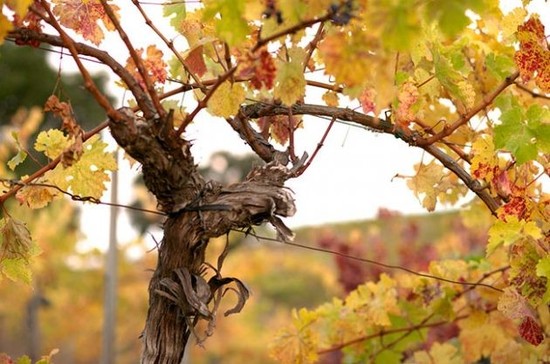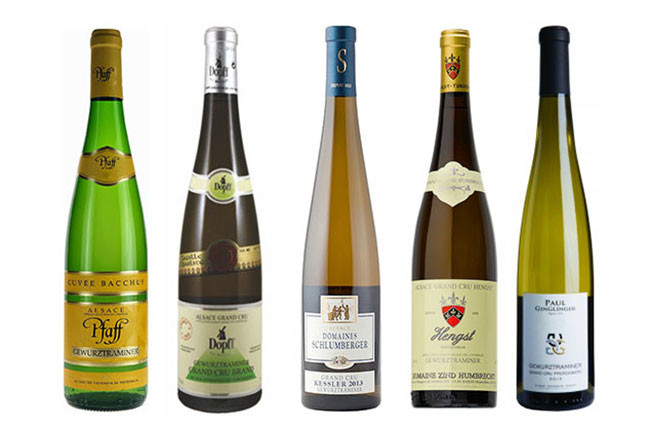There are over a thousand different varieties of ‘Vitis vinifera’ (the vine used for wine production) all over the world. The grapes range from the modern types, generated by crossing pre-existing varieties, to the more traditional ones such as Pinot Noir and Riesling.

It is this vine which has been used to make wine down the millennia in the Middle East and Europe, and which nowadays is planted in the New World as well. There are over a thousand different varieties of Vitis vinifera. Each of these varieties produces wines with an individual flavour – many of these such as Chardonnay and Cabernet Sauvignon, have become household names.
Most of the familiar ones, like Pinot Noir and Riesling, have been with us for several hundred years. However, many ‘new’ grape varieties, such as Muller-Thurgau and Pinotage, have been generated in modern times by crossing pre-existing varieties.
Vitis vinifera’s greatest weakness is its susceptibility to an aphid called Phylloxera vastatrix. This vine louse was introduced from Californian vines and spread rapidly throughout most of the world’s vineyards during the second half of the nineteenth century. Phylloxera destroys the root system of the Vitis vinifera, ultimately killing it. There were no effective treatments.
Fortunately, it was noticed that some of the vine species originating in North America, such as Vitis rupestris and Vitis riparia, could cope with Phylloxera. These vines did not produce attractive wines, but by grafting a cutting of Vitis vinifera onto an American vine rootstock, growers were able to replant their devastated vineyards.
Most of the world’s vineyards are planted with grafted vines like this today, everything above ground being Vitis vinifera, and everything below ground being American vine. The main exceptions are vineyard areas like Chile and South Australia, that have to date avoided Phylloxera infestation. In these cases Vitis vinifera vines can still be planted on their own roots.
It takes a newly planted vine three of four years to produce its first crop of grapes. Once in cropping mode, young, vigorous vines yield quite heavily. The quality of the fruit at this stage is often a little simple. As the vine gets older, over thirty years or so, its vigour declines and yield drops. However, what fruit it does produce becomes increasingly concentrated and intensely flavoured. It should come as no surprise that many of the world’s most interesting wines are made from the fruit of old vines.
Vine-breeding keywords
Cross – intraspecific
When one variety of Vitis vinifera (the native Mediterranean species, source of ‘Old World’ fine wine grapes as opposed to table grapes) is combined with another Vitis vinifera via sexual reproduction. The pollen of the first fertilises the flower of the second. The four seeds of the resulting fruit are the offspring, each of which can create a new Vitis vinifera. Parentage is expressed as Grape A x Grape B (ie, Malbec’s parents are Magdeleine Noire des Charentes x Prunelard).
Hybrid
This is also a cross but an ‘interspecific’ one, between a Vitis vinifera species and a non-vinifera one, such as Vitis labrusca or Vitis riparia.
Clone
The creation of a plant with the same genetic material as another, via asexual reproduction: a piece of one vine is either grafted or planted directly in soil. The first generation will be identical to the ‘mother’, but as the plant mutates over time and adapts to different conditions, it will develop new characteristics that, if welcome, will be encouraged by the producer. This is why Syrah (Dureza x Mondeuse Blanche) from California is different to that of the Rhône.
Grape-scape: a potted history
Left alone for millennia to develop and adapt, most grapes are the result of spontaneous Vitis vinifera crosses (see box opposite page). But following Europe’s phylloxera outbreak, the tradition of allowing several varieties to grow in one vineyard was eliminated.
Scrambling to resurrect their livelihoods, growers grafted disease-free components, methodically separated into varietal parcels. Machines and chemicals have prevented the kind of uninhibited assignations that in the past produced a love-child like Chardonnay (Pinot Blanc, Gris or Noir x Gouais Blanc).
Written by Jonathan Pedley and Maggie Rosen
Subscribe to Decanter Premium to read latest articles from Decanter Magazine>>
Translated by Sylvia Wu / 吴嘉溦
All rights reserved by Future plc. No part of this publication may be reproduced, distributed or transmitted in any form or by any means without the prior written permission of Decanter.
Only Official Media Partners (see About us) of DecanterChina.com may republish part of the content from the site without prior permission under strict Terms & Conditions. Contact china@decanter.com to learn about how to become an Official Media Partner of DecanterChina.com.








Comments
Submit